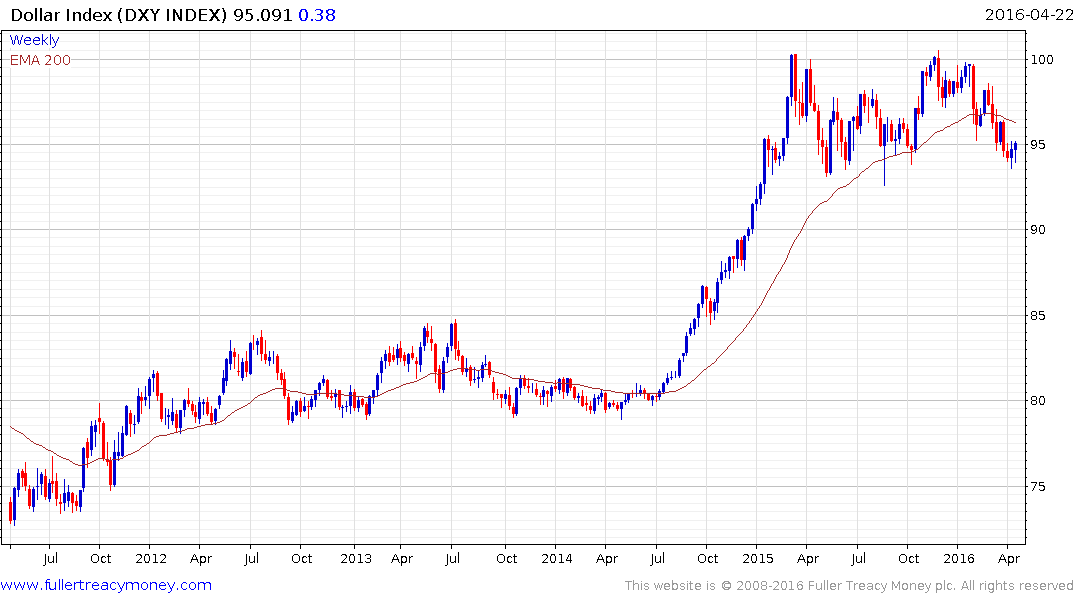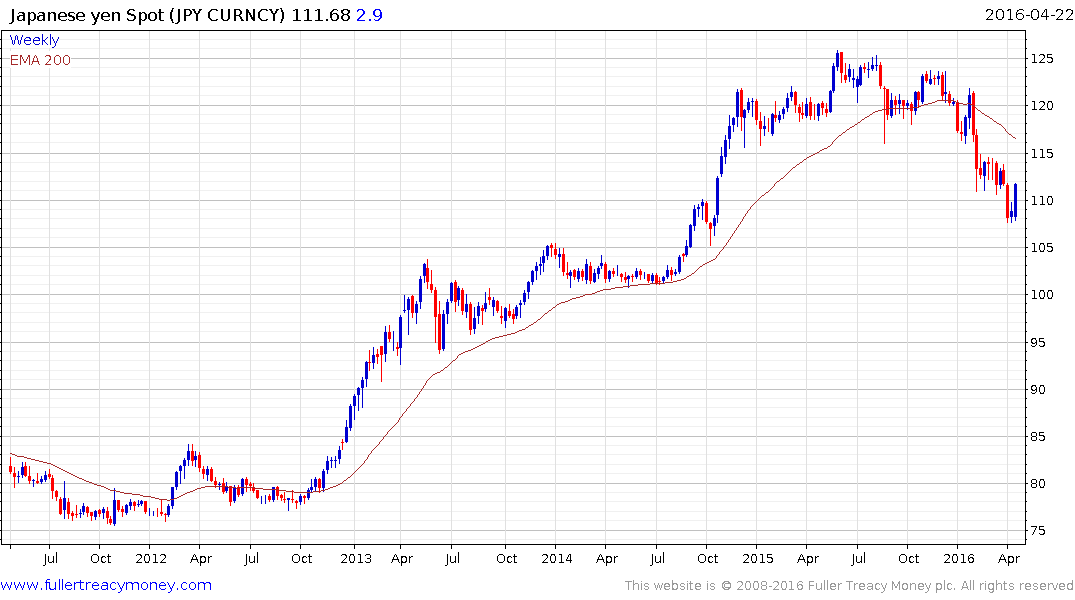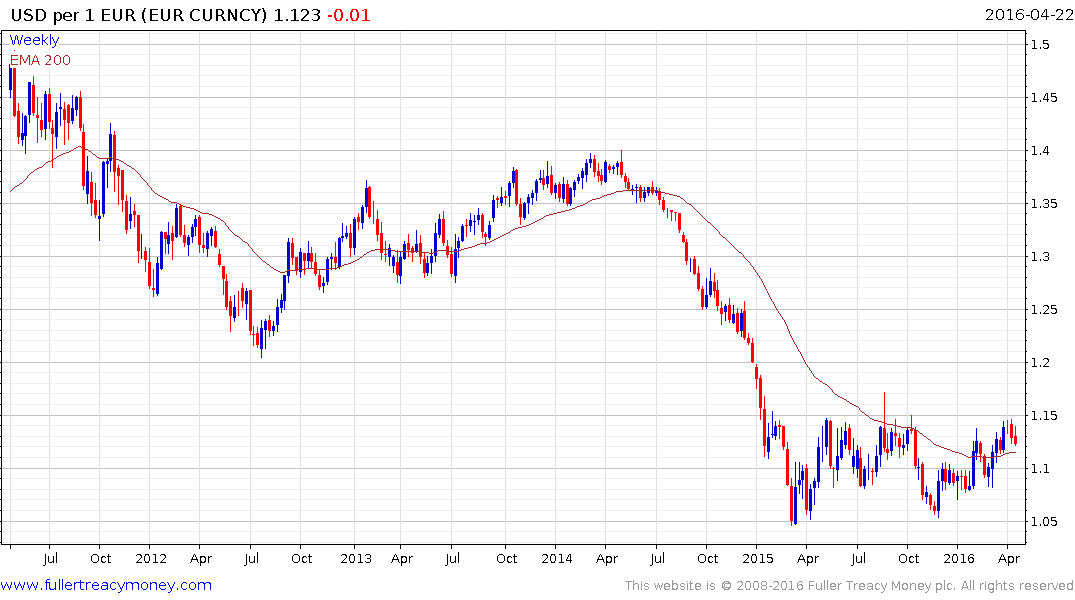Yen Falls Most in 17 Months as BOJ Considers More Negative Rates
This article by Lananh Nguyen and Anooja Debnath for Bloomberg may be of interest to subscribers. Here is a section:
“Japan’s economy seems even more ripe for monetary stimulus," said Joe Manimbo, an analyst with Western Union Business Solutions, a unit of Western Union Co., in Washington.
That, alongside “reports of a rising risk of BOJ action next week," are causing the yen to plunge, he said.
The currency, which tends to gain in times of market turmoil as investors seek its relative safety, has appreciated almost 8 percent against the dollar this year as equity and commodity markets faltered. The yen’s gains have prompted analysts to weigh in on the prospect for Japanese officials to act to curb the currency’s strength. As of late February, Japan hadn’t intervened in currencies since 2011.
The yen weakened 1.9 percent to 111.59 per dollar as of 12:46 p.m. in New York. It reached a level where a close would be the biggest decline since October 2014. It’s headed for a 2.6 percent weekly decline, after a 0.6 percent slide the previous week. Japan’s currency depreciated 1.4 percent to 125.27 per euro on Friday.
Japan is moving further down the path of experimenting with untried monetary measures with the potential for loans to be marked at negative rates. Yes, that means allowing investors to borrow money with the commitment to give less back. That’s the definition of helicopter money and is unlikely to be a tailwind for the Yen. The ECB is probably the only other major central considering similar moves while the Fed is a lot further away from those kinds of polices.

With the Dollar Index back at the lower side of its range some steadying is to be expected not least because the USA’s economy is further along on its path to recovery than other developed markets. The medium-term outlook continues to exhibit first step above the base characteristics suggesting Dollar dominance is more likely than not.

The Dollar is now unwinding an overextension relative to the trend mean against the Yen and a sustained move above the MA will be required to confirm a return to demand dominance beyond short-term steadying.

The Euro is now pulling back from the upper side of its more than yearlong range against the Dollar and a sustained move above $1.15 would be required to question potential for additional lower to lateral ranging.


